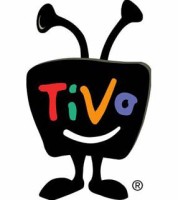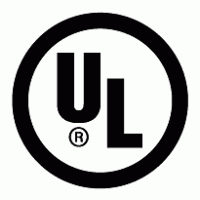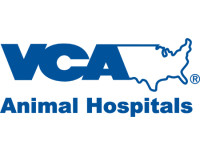Author: Vasco Doves
1. THE ROLE OF PUBLIC RELATIONS
Public relations (PR) is a term that is widely misunderstood and misused to describe anything from selling to hosting, when in fact it is a very specific communications process. Every company, organization, association, and government or says. They might be employees, customers, stockholders, competitors, suppliers, or Just the general population of consumers. Each of these groups may be referred to as one of the organization's publics. The process of public relations manages the organization's relationships with these publics.
As soon as word of the Valdez Spill got out, the PR staff at Exxon assumed responsibility for handling the barrage of phone calls from the press and the public and for managing all company communications with the media.
Simultaneously, other company departments had to deal with numerous local, state, and federal government agencies and with the community at large – not just in Valdez, Alaska, but anywhere in the world where someone was touched by the disaster. In addition, myriad other publics suddenly popped into the spotlight demanding special attention and care: Alaskan fishermen, both houses of congress, local politicians, the financial community, stockholder, employed, the local press, national networks, Exxon dealers, and environmental groups, for starters.
Companies and organizations know they must consider the public impact of their actions and decisions because of the powerful effect of public opinion. This is especially true in time of crisis, emergency, or disaster. But it is just as true for major policy decisions concerning changes in business management, pricing policies, labor negotiations, introduction of new products, or changes in distribution methods. Each of these decisions affects different groups in different ways. Conversely, effective administrators can use the power of these groups' opinions to bring about positive changes.
In short, the purpose of ever using labeled public relations is to influence public opinion toward building goodwill and a positive reputation for the organization. In one instance, the PR effort might be to rally public support; in another, to obtain public understanding or neutrality or in still another, simply to respond to inquiries. Well-executed public relations is a long-term activity that molds good relationships between an organization and its publics. Put yourself in the position of Exxon's top public relations manager at the time of the Valdez accident. What do you suppose was the major thrust of the PR staff's efforts in the days immediately following the discovery of the oil spill? What might they have been called on to do?
We will discuss these and other questions in this chapter. But first it is important to understand the relationship between public relations and advertising they are so closely related but so often misunderstood.
2. CORPORATE ADVERTISING
As mentioned earlier, corporate advertising is basic tool of public relations. It includes public relations advertising, institutional advertising, corporate identity advertising, and recruitment advertising. Their use depends on the particular situation, the audience or public being addressed, and the message the firm needs to communicate.
2.1 PUBLIC RELATIONS ADVERTISING
Public relations advertising is often used when a company wishes to communicate directly with one of its important publics to express its feelings or enhance its paint of view to that particular audience. The Claris ad in exhibit 18-7, for example, targets customers investors, and stock analysts. Public relations ads are typically used to improve the company's relations with labor, government, customers, or suppliers.
When companies sponsor art events, programs on public television, or charitable activities, they frequently place public relations ads in other media to promote the programs and their sponsorship. These ads are designed to enhance the company's general community citizenship and to create public goodwill. The ad in Exhibit 18-8 promotes an art exhibit ant southwestern Bell's sponsorship role.
2.2 CORPORATE/INSTITUTIONAL ADVERTISING
In recent years the term corporate advertising has come to denote that broad area of non-product advertising used specifically to enhance a company's image and increase lagging awareness. The traditional term for this its institutional advertising.
Institutional or corporate ad campaigns may serve a variety of purposes – to report the company's accomplishments, to position the company competitively in the market, to reflect a change in corporate personality, to shore up stock prices, to improve employee morale, or to avoid a communications problem with agents, suppliers, dealers, or customers.
Companies and even professional advertising people have historically questioned, or simply misunderstood, the effectiveness of corporate advertising. Retailers, in particular, have clung to the idea that institutional advertising may be pretty or nice, but that it ' doesn't make the cash register ring '. However, a series of marketing research studies sponsored by Time magazine and conducted by the Jankelovich, Kelly & White research firm offered dramatic evidence to the contrary.
In the first of these studies, 700 middle- and upper-management executives were interviewed in the top 25 U.S. markets. The researchers evaluated five companies that were currently doing corporate advertising and five that were not. They found that the companies using corporate advertising registered significantly better awareness, familiarity, and overall impression than companies using only product advertising. In fact, the five corporate advertisers in the study drew higher ratings in every one of 16 characteristics measured, including being known for quality products, having competent management, and paying higher dividends. Perhaps the most interesting aspect of the research was the fact that the five companies with no corporate advertising spent far more for total advertising than did the firms engaged in corporate advertising.
David Ogilvy, the founder and creative head of Ogilvy & Mather, has been an outspoken advocate of corporate advertising. However, he has been appalled by most corporate advertising, characterizing it as filled with ' pomposity ', ' Vague generalizations,' and ' fatuous platitudes'. Corporate advertising has also been criticized for oblivious to the needs of the audience.
Responding to such criticisms and to other forces in the marketplace, corporations have made policies and campaigns. Expenditures for this type over the last decade. The primary medium used for corporate advertising is consumer (primarily business) magazines, followed by network television.
A change in message strategy has also accompanied this increase in corporate ad spending. In the past, most corporate ads were designed primarily to create goodwill for the company. Today with many corporations diversifying and competition from for ling advertisers increasing, these same firms find their corporate ads must do much more. Their ads must accomplish specific objectives- develop awareness of the company and its activities, attract quality employees, tie a diverse product line together, and take a stand on important public issues.
Another category of corporate advertising is called advocacy advertising. Corporations use it to communicate their views on issues that affect tailors its stand to protect its position in the marketplace.
Corporate advertising is also increasingly being used to set the company up for future sales. Although this is traditionally the realm of product advertising, many advertisers have instituted ' umbrella ' campaigns that simultaneously communicate message about the products and the company. This has been termed market prep corporate advertising a GTE umbrella campaign, for example, emphasized the company's products and services in a way that pointed up its overall technological sophistication.
Of course, no amount of image advertising can accomplish desired goals if the image does not match the corporation. As noted image consultant Clive Chajet put it, 'You can't get away with a dies enounce between the image and the reality – at least not for long '. If, for example, a sophisticated high-tech corporation like IBM tried to project a homey, small-town family image. It would lose credibility very quickly.
2.3 CORPORATE IDENTITY ADVERTISING
Companies take pride in their logos and corporate signatures in fact, the graphic designs that identity corporate names and products are considered valuable assets of the company, and great effort is expended to protect their individuality and ownership. The corporate logo may even dominate advertisement. What does a company do, though, when it decides to change its name, logos, trademarks, or corporate signatures, as when it merges with another company? How does it communicate that change to the market it serves and to other influential publics? This is the job of corporate identity advertising.
When software publisher Productivity Products International changed its name to Stepstone Inc., it faced an interesting dilemma. It needed to advertise the change. But in Europe, a key market for the firm, a corporate name change implies that the business has gone bankrupt and is starting over with a new identity. So, rather than announcing its new name in the print media, stepson used a direct-mail campaign. It mailed an announcement of its name change to customers, prospects, investors, and the press. The campaign was a success: within days of the mailing, almost 70 customers and prospects called Stepstone to find out more about the company and its products. More familiar corporate name changes from the recent past include the switch from America of Western Bank corporation to First Intestate Bankcorp; the change of Consolidated Foods to replace the pre-merger identities of Boroughs and Sperry.
2.4 RECRUITMENT ADVERTISING
When the prime objective of corporate advertising is to attract employment applications, companies use recruitment advertising such as the Chiat/Da ad in Exhibit 18-10. Recruitment advertising is most frequently found in the classified sections of daily newspapers and is typically the responsibility of the personnel department rather than the advertising department. Recruitment advertising has become such a large field, though, that many advertising agencies now have recruitment specialists on their staffs. In fact, some agencies specialize completely in recruitment advertising, and their clients are corporate personnel managers rather than advertising department managers These agencies create, write, and place classified advertisements in news papers around the country and prepare recruitment display ads for specialized trade publications. So far in this chapter, we have discussed only the advertising of commercial organizations. But nonprofit organizations also advertise. The government charities, trade associations, and religious groups, for example, use the same kinds of creative and media strategies as their counterparts in the for-profit sector to convey messages to the public. But unlike commercial advertisers whose goal is to create awareness, image, or brand loyalty on the pan o' consumers, noncommercial organizations use advertising to affect consume! opinions, perceptions, or behavior–with no profit motive. While commercial advertising is used to stimulate sales.
3. NON-COMMERCIAL ADVERTISING
Used to stimulate donations, to persuade people to vote one way or another or to bring attention to social causes.
If a specific commercial objective for a new shampoo is to change people'; buying habits, the analogous noncommercial objective for an energy conservation program might be to change people's activity habits, such as turning off the lights. The latter is an example of demarcating, which means the advertiser is actually trying to get consumers to buy less of a product 01 service. Exhibit 18-11 compares objectives of commercial and noncommercial advertisers.
3.1 EXAMPLES OF NONCOMMERCIAL ADVERTISING
One example of noncommercial advertising conducted on a large scale is the anti-drug campaign created by the Partnership for a Drug-Free America. In 1987, this coalition of more than 200 ad agencies, the media and many other companies in the communications business launched an all-out attack on drug abuse. The coalition set its goal as the 'fundamental reshaping of social attitudes about illegal drug usage.' The $1.5 billion program entails the efforts of ad agencies across the country, each developing components of the campaign at their own cost.
The anti-drug program includes hundreds of newspaper and magazine ads as well as 200 different commercials and print ads. The space and time allotted for the ads, all donated by the media, are worth an estimated $310 million per year.24 Similarly, most of the creative and production suppliers have donated their services.
The wide variety of ads have been created to reach specific target groups. Some are aimed at cocaine users, some at marijuana smokers; some are aimed at parents, some at children. Most ads present hard-hitting messages about the dangers of drug abuse, depicting drug use as a sure route to the hospital or the cemetery. In a TV commercial targeted at teenaged marijuana smokers, for example, the Ayer agency suggests that pot smokers are subjecting themselves to the risk of physical and mental health problems. Other commercials compare the brain on drugs to an egg in frying pan or show dead rats that have succumbed to cocaine abuse. Print ads have also emphasized the dangers of cocaine abuse, including a series of ads developed by DDB Needham Worldwide that enumerate cocaine's effects. Exhibit 18-12 is from that series of ads. In addition, some ads speak to parents who use drugs ('If parents stop, kids won't start'), to women tempted to use cocaine ('What to do if he hands you a line'), and to parents who have put off talking to their children about drugs ('If everybody says it can't happen to their kids, then whose kids is it happening to?').
The effort is being billed as the 'largest and most ambitious private-sector, voluntary peacetime effort ever undertaken.' Believing that the United States cannot succeed as a drug culture and that advertising can 'demoralize' drug use, the organization wants nothing less than a drug-free America.
Not all public service advertising is done on such a massive scale. We see advertisements daily for intangible humanitarian social causes (Red Cross), political ideas or issues (political candidates), philosophical or religious positions (Church of Latter Day Saints), or particular attitudes and viewpoints (labor unions). In most cases, these advertisements are created and placed by nonprofit organizations, and the product they advertise is their particular mission in life, be it politics, welfare, religion, conservation, health, art, happiness, or love.
Research conducted by the Partnership for a Drug-Free America proves that noncommercial advertising does change consumer attitudes. Specifically, the coalition's ads have changed attitudes about drug use. Thus, by providing information to the public on issues such as health, safety, education, and the environment, noncommercial advertising helps build a better society. Public service announcements emphasizing the dangers of unsafe sex and drunk driving and those stressing the virtues of recycling and continuing education demonstrate that noncommercial advertising can help to enhance the quality of life.
3.2 TYPES OF NON-COMMERCIAL ADVERTISING
One way to categorize the various types of noncommercial advertising is by the organizations that use them. For instance, advertising is used by churches, schools, universities, charitable organizations, and many other non-business institutions. We also see advertising by associations, such as labor groups, professional organizations, and trade and civic associations. In addition, we witness millions of dollars' worth of advertising placed government organizations: the U.S. Army, Navy, Marine, Corps, and Postal Service; the Social Security Administration; the Internal Revenue Service; and various state chambers of commerce. In addition, in election years we are bombarded with all sorts of political advertising that qualifies as noncommercial. The Advertising Council Most of the national PSAs you see on television have been placed there by the Advertising Council, a private, nonprofit organization that links noncommercial campaign sponsors with ad agencies. The sponsors pay for production costs, while the ad agencies donate their creative services.
3.3 ADVERTISING COUNCIL
The Ad Council's policy today is basically the same as when it began during World War II: 'Accept no subsidy from government and remain independent of it. Conduct campaigns of service to the nation at large, avoiding regional, sectarian, or special-interest drives of all kinds. Remain nonpartisan and nonpolitical. Conduct the Council on a voluntary basis. Accept no project that does not lend itself to the advertising method. Accept no campaign with a commercial interest unless the public interest is obviously over riding.'
Among familiar campaigns created by the Ad Council are those for the United Negro College Fund ('A mind is a terrible thing to waste'); child abuse prevention ('Help destroy a family tradition'); the United Way ('It works for all of us'); crime prevention ('Take a bite out of crime'); and the U.S. Department of Transportation ('Drinking and driving can kill a friendship'). Exhibit 18-17 shows frames from an Ad Council commercial that advocates a healthy diet. The Ad Council's two longest-running campaigns are those for the American Red Cross and forest fire prevention. According to the Ad Council's research, the number of forest fires has been cut in half over the life of the Smokey Bear campaign.29 The council is currently playing a role in overseeing the Partnership for a Drug-Free America effort.
Article Source: http://www.articlesbase.com/advertising-articles/public-relations-corporate-advertising-and-noncommercial-advertising-4578973.html

















